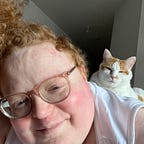Tesla’s Computer Vision Master Plan
Creating a fully self-driving car with cameras, deep neural networks, and data from customers’ cars
I became a Tesla investor shortly after the mind-blowing Hardware 2 announcement on October 19, 2016. From that day forward, Tesla started equipping every car it produced with a sensor suite designed for full self-driving. Along with cameras, radar, and ultrasonic sensors, Tesla also included an upgradable onboard computer dedicated to the perception and planning tasks that full self-driving requires.
Combined with the long-standing ability to deliver over-the-air software updates to its cars, Tesla created something that took my breath away: a turnkey self-driving car. Around 150,000 Hardware 2 Teslas are currently driving on roads around the world. These otherwise conventional vehicles are a software update away from becoming fully self-driving cars.
The truly brilliant part of this plan is not the ability to instantly create an enormous fleet of self-driving taxis, although that is certainly a virtue. It’s the unparalleled, unprecedented flood of data that is rushing in through the sensors of these 150,000 or so vehicles, coupled with other data like GPS coordinates and driver input. This offers a scale of real world testing and training that is new in the history…
